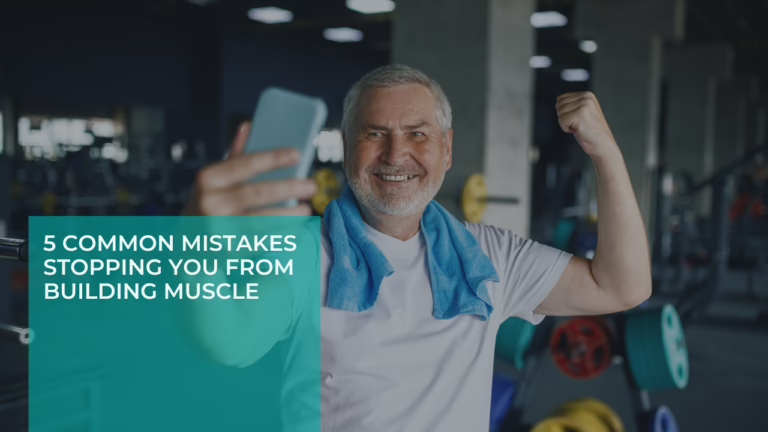Zinc is an essential nutrient that plays a critical role in maintaining optimal health. Despite its significance, many people remain unaware the benefits of zinc, the recommended daily intake, the consequences of zinc deficiency, and the best dietary sources of zinc. This comprehensive guide delves into these aspects, providing valuable insights and practical advice on harnessing the power of zinc for better health.
Introduction
Zinc is a trace mineral that is vital for numerous bodily functions. From aiding in the synthesis of proteins and DNA to supporting immune function, zinc is indispensable. However, the body does not store zinc, necessitating a regular intake through diet or supplementation. Understanding the importance of zinc, how much you need, and where to get it can help ensure you are reaping all the health benefits this essential mineral has to offer.
Zinc: An Essential Nutrient
Why Zinc is Essential for Health
Zinc is required for several critical processes in the body. It plays a pivotal role in:
- Protein and DNA Synthesis: Zinc is necessary for the creation of proteins and DNA, which are the building blocks of cells.
- Growth and Development: It supports growth and development during pregnancy, infancy, childhood, and adolescence.
- Immune Function: Zinc helps the immune system fight off invading bacteria and viruses.
- Wound Healing: It is crucial for proper wound healing.
- Taste and Smell: Zinc is essential for maintaining a proper sense of taste and smell.
Given its wide range of functions, it’s clear that maintaining adequate zinc levels is crucial for overall health.
How Much Zinc Do We Need?
The recommended daily allowance (RDA) for zinc varies based on age, gender, and life stage. Here’s a quick reference guide developed by the Food and Nutrition Board (FNB) at the Institute of Medicine of the National Academies:
| Life Stage | RDA |
|---|---|
| Birth to 6 months | 2 mg |
| Infants 7–12 months | 3 mg |
| Children 1–3 years | 3 mg |
| Children 4–8 years | 5 mg |
| Children 9–13 years | 8 mg |
| Teens 14–18 years (boys) | 11 mg |
| Teens 14–18 years (girls) | 9 mg |
| Adults (men) | 11 mg |
| Adults (women) | 8 mg |
| Pregnant women | 11 mg |
| Breastfeeding women | 12 mg |
Most people can meet their zinc needs through a varied diet rich in whole foods. However, certain populations, such as vegetarians and vegans, may require 50% more of the RDA for zinc due to lower bioavailability from plant-based sources.

Understanding Zinc Deficiency
While zinc deficiency is relatively rare in developed countries, it can still occur. Populations at risk include:
- People with Genetic Mutations: Some rare genetic conditions can lead to zinc deficiency.
- Breastfeeding Infants: Infants whose mothers are zinc deficient may also be at risk.
- People with Alcohol Dependency: Alcohol can interfere with zinc absorption and increase the loss of zinc through urine.
Symptoms of Zinc Deficiency
Zinc deficiency can manifest through various symptoms, including:
- Slow Growth: Particularly in infants and children.
- Hair Loss: Often one of the visible signs.
- Diarrhoea: A common symptom of zinc deficiency.
- Eye and Skin Sores: Indicating poor healing and skin health.
- Loss of Appetite: Reduced appetite and taste disturbances.
Low zinc levels can also affect the body’s ability to heal wounds, taste food properly, and can lead to alertness issues, delayed sexual development, and impotence in men.
The Best Dietary Sources of Zinc
Animal-Based Sources
Red meat, poultry, and eggs are the primary sources of zinc in many diets. However, seafood like sardines, oysters, crab, and lobster are particularly rich in zinc, with oysters providing the highest zinc content per serving.
Plant-Based Sources
Although plant-based sources generally provide lower bioavailability, there are several good options, including:
- Legumes: Chickpeas, lentils, black beans, and kidney beans.
- Nuts and Seeds: Pumpkin seeds, cashews, and hemp seeds.
- Whole Grains: Oats, quinoa, and brown rice.
Enhancing Zinc Absorption
Phytates found in whole-grain bread, cereals, and legumes can inhibit zinc absorption. To mitigate this, it is beneficial to soak beans, grains, and seeds in water for several hours and then rinse them. This process can help reduce phytate levels and increase zinc bioavailability.
Zinc Supplementation: Is It Necessary?
For most people, a balanced diet will provide adequate zinc. However, certain conditions may necessitate supplementation. Excessive zinc intake can lead to toxicity, causing reduced immunity and other severe complications. Always consult with a healthcare provider or dietitian before starting any supplement regimen to determine if you need additional zinc and to establish the appropriate dosage.
Health Benefits of Zinc
Boosting Immune Health
Zinc is known for its immune-boosting properties. It helps in the development and function of immune cells, enhances the body’s ability to fight infections, and has been shown to reduce the duration and severity of the common cold.
Promoting Healthy Growth
Zinc is crucial during periods of rapid growth, such as childhood and adolescence. It supports cellular growth and division, ensuring proper development.
Supporting Wound Healing
Due to its role in collagen synthesis and inflammatory response, zinc is essential for wound healing. It helps the body repair damaged tissues and maintain skin integrity.
Enhancing Cognitive Function
Adequate zinc levels are linked to improved cognitive function and mental clarity. Zinc plays a role in neurotransmitter function and helps protect the brain from oxidative stress.
Zinc in Pregnancy and Breastfeeding
Zinc is particularly important during pregnancy and breastfeeding. It supports foetal development and maternal health. Pregnant women require higher zinc levels to support the rapid growth of the foetus and the health of the placenta. Breastfeeding women also need increased zinc to ensure their milk provides adequate nutrition for the infant.
Conclusion
Zinc is an indispensable nutrient that plays numerous roles in maintaining health and preventing disease. By understanding its importance, recognising the signs of deficiency, and knowing how to incorporate zinc-rich foods into your diet, you can ensure you are meeting your body’s needs. Whether through dietary sources or supplements, maintaining adequate zinc levels can significantly impact your overall health and well-being.
FAQs
What are the symptoms of zinc deficiency?
Zinc deficiency can cause slow growth in children, hair loss, diarrhoea, eye and skin sores, and loss of appetite. It can also affect wound healing, taste, alertness, and sexual development in men.
How can vegetarians ensure they get enough zinc?
Vegetarians should consume a variety of zinc-rich plant foods such as legumes, nuts, seeds, and whole grains. Soaking these foods before cooking can help increase zinc bioavailability.
Is it possible to consume too much zinc?
Yes, excessive zinc intake can lead to toxicity, which can impair immune function and cause other severe health issues. It is important to follow recommended guidelines and consult with a healthcare provider before taking supplements.
Why is zinc important for the immune system?
Zinc plays a critical role in the development and function of immune cells. It helps the body fight off infections and can reduce the duration and severity of the common cold.
Can zinc supplements help with colds?
Zinc supplements, particularly in the form of lozenges, have been shown to reduce the duration and severity of the common cold when taken within 24 hours of the onset of symptoms.
What are the best animal-based sources of zinc?
The best animal-based sources of zinc include red meat, poultry, eggs, and seafood such as oysters, sardines, crab, and lobster.
References and Further Reading
Solomons, N. W. (1998). Mild human zinc deficiency produces an imbalance between cell-mediated and humoral immunity. Nutrition Reviews, 56(1 Pt 1), 27-28. doi: 10.1111/j.1753-4887.1998.tb01656.x. PMID: 9481116.
Prasad, A. S. (1995). Zinc: an overview. Nutrition, 11(1 Suppl), 93-99. PMID: 7749260.
Heyneman, C. A. (1996). Zinc deficiency and taste disorders. Annals of Pharmacotherapy, 30(2), 186-187. doi: 10.1177/106002809603000215. PMID: 8835055.
Simmer, K., & Thompson, R. P. (1985). Zinc in the fetus and newborn. Acta Paediatrica Scandinavica. Supplement, 319, 158-163. doi: 10.1111/j.1651-2227.1985.tb10126.x. PMID: 3868917.
Sandström, B. (1997). Bioavailability of zinc. European Journal of Clinical Nutrition, 51 Suppl 1, S17-S19. PMID: 9023474.
Wise, A. (1995). Phytate and zinc bioavailability. International Journal of Food Sciences and Nutrition, 46(1), 53-63. doi: 10.3109/09637489509003386. PMID: 7712343.
Maret, W., & Sandstead, H. H. (2006). Zinc requirements and the risks and benefits of zinc supplementation. Journal of Trace Elements in Medicine and Biology, 20(1), 3-18. doi: 10.1016/j.jtemb.2006.01.006. Epub 2006 Feb 21. PMID: 16632171.
Shankar, A. H., & Prasad, A. S. (1998). Zinc and immune function: the biological basis of altered resistance to infection. American Journal of Clinical Nutrition, 68(2 Suppl), 447S-463S. doi: 10.1093/ajcn/68.2.447S. PMID: 9701160.
Hemilä, H. (2017). Zinc lozenges and the common cold: a meta-analysis comparing zinc acetate and zinc gluconate and the role of zinc dosage. JRSM Open, 8(5), 2054270417694291. doi: 10.1177/2054270417694291. PMID: 28515951; PMCID: PMC5418896.
Dixon, L. B., Winkleby, M. A., & Radimer, K. L. (2001). Dietary intakes and serum nutrients differ between adults from food-insufficient and food-sufficient families: Third National Health and Nutrition Examination Survey, 1988-1994. Journal of Nutrition, 131(4), 1232-1246. doi: 10.1093/Jn/131.4.1232. PMID: 11285332.
Disclaimer: This blog post is intended for informational purposes only and does not constitute medical advice. While I am a certified Nutritionist and Personal Trainer, I am not a healthcare professional. The information provided in this post is based on my personal experiences, professional expertise, and available research. It should not be used as a substitute for professional medical advice, diagnosis, or treatment. Always seek the advice of your healthcare provider with any questions you may have regarding a medical condition or treatment and before undertaking a new health care regimen. Never disregard professional medical advice or delay in seeking it because of something you have read on this blog.


